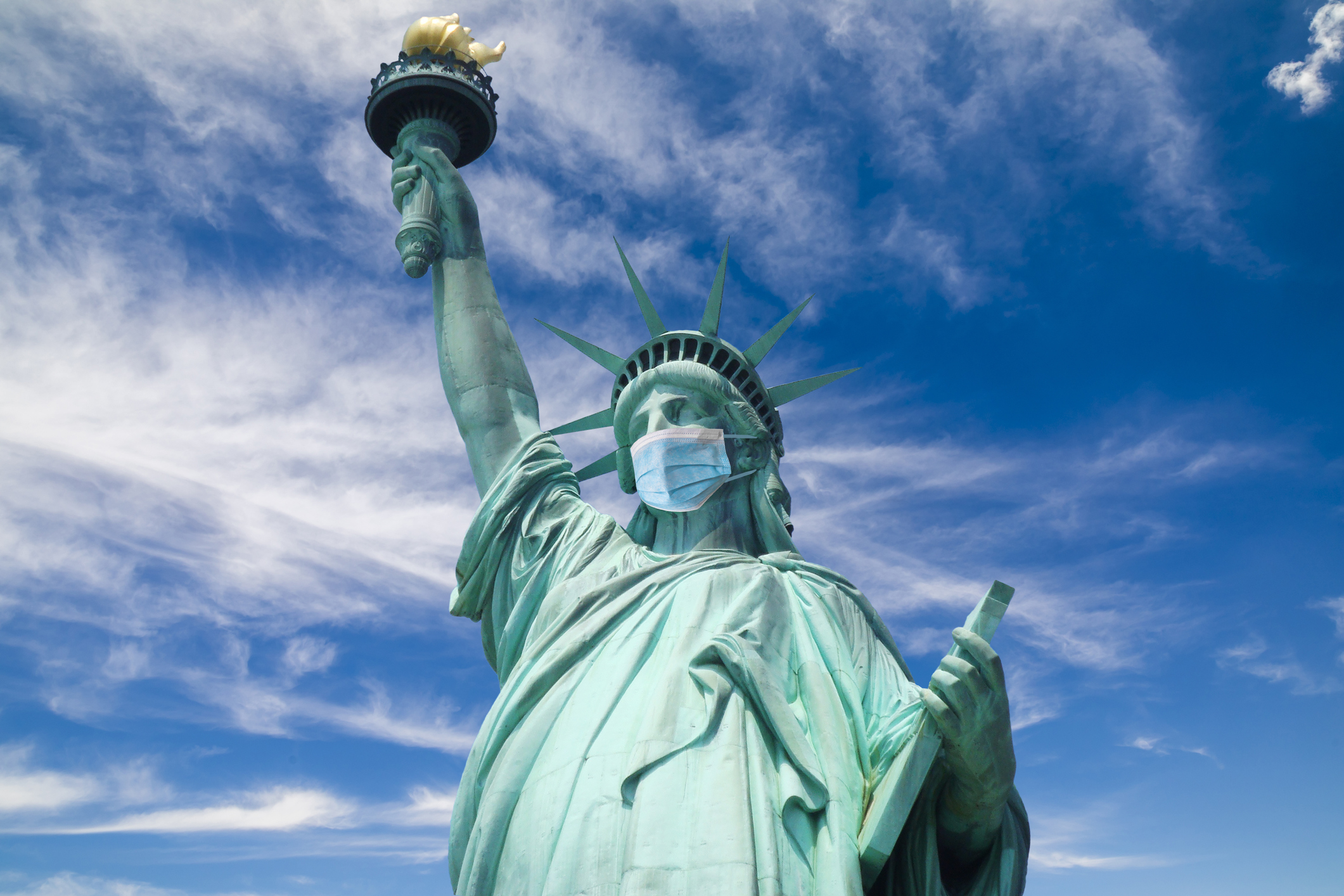Amendments to Recently Adopted NY HERO Act Now In Effect, Model Exposure Prevention Plans Issued

New York, N.Y. (July 13, 2021) - As noted in our May 13 Client Alert, New York recently enacted the Health and Essential Rights Act (HERO Act, or the Act), which mandates extensive new workplace health and safety protections to prevent workplace exposure to airborne infectious diseases. Shortly thereafter, amendments were signed into law on June 11, 2021 that: (i) extended the deadline for the New York State Department of Labor (DOL) to publish safety standards and model exposure prevention plans; (ii) scaled back the role of workplace safety committees; and (iii) limited an employee’s ability to assert a private right of action against an employer for violations.
On July 7, 2021, the DOL published the required Airborne Infectious Disease Exposure Prevention Standards (Minimum Standards), as well as model exposure prevention plans that trigger certain actions and deadlines for employers. We describe below the details of these new developments and provide some key compliance action items for covered businesses.
Airborne Disease Prevention Plans
The HERO Act originally required the DOL to issue industry-specific model airborne disease prevention safety standards by June 4, 2021. The Amendments moved this deadline to July 5, 2021 and also required the DOL to publish a model general prevention plan applicable to all worksites not included within the industry-specific standards. Employers now have 30 days from July 7, 2021 to either adopt a model prevention plan (discussed below) or create their own alternative prevention plan that meets or exceeds the DOL’s Minimum Standards. Additionally, employers have 60 days from publication of the Minimum Standards to share their safety plans with employees.
The DOL’s Model Airborne Infectious Disease Exposure Prevention Plan (the Plan) outlines an array of general, advanced, and administrative exposure controls during an airborne disease outbreak.
General exposure controls include hand washing, physical distancing, face coverings, stay-at-home policies, and employee health screenings for symptoms. Advanced controls mostly focus on ventilation and disinfection during an outbreak, leaving open the possibility for local exhaust ventilation, general ventilation systems or air filters for larger areas, and opening windows and doors. The administrative controls follow the theme of physical distancing and lessening exposure potential by allowing for fewer workers, slowed production, disinfecting the workplace, increased physical distancing, limiting shared workstations, and posting signs about respiratory etiquette. Finally, the Plan delineates the provision of employer-provided PPE and increased housekeeping and sanitation during outbreaks.
Industry-specific standards have also been provided, which closely mirror the Plan but also supply tangible examples of actions that employers must take in each of the aforementioned exposure control categories. Employers subject to the industry-specific standards include those in agriculture, construction, delivery services, domestic works, emergency response, food services, manufacturing and industry, personal services, private education, private transportation, and retail.
It is important to note that, while the Plan and its industry-specific equivalents provide an array of examples of steps that may be taken during an outbreak, these are simply recommendations. Employers may tailor the model prevention plans or create their own from scratch, provided they do so by the 30-day deadline. Employers that develop their own alternative prevention plans must do so pursuant to an agreement with the collective bargaining representatives, if any, or, for non-unionized workforces, with the meaningful participation of employees.
Although employers are required to adopt and provide employees with written notice of the prevention plans, activation and implementation of the prevention plans is not required unless an airborne infectious disease is designated by the New York State Commissioner of Health as a highly contagious communicable disease that presents a serious risk of harm to the public health. The DOL confirms there is no such designation currently in effect.
Workplace Safety Committees
The amendments to the Act also narrow the scope of the required workplace safety committees, which employees may begin forming as of November 1, 2021. Previously, the Act was ambiguous about the “employer policies” that the committees are empowered to review. The amendments clarify that the reviewable policies are limited to issues of occupational health and safety. The number of required committees was also unclear, but this has been clarified to require only one committee per worksite. If a company’s pre-existing similar workplace safety committee is already consistent with the requirements of the Act, there is no need to create a new committee. Finally, the amendments also reduce the amount of paid time available to workplace safety committee members for meetings and training. Committee meetings during work hours are now limited to two hours in duration, while the committee trainings are limited to a maximum of four hours.
Private Right of Action
Finally, the amendments provide significant modifications to the private right of action provision. The amendments to this section are particularly employer-friendly and should ease immediate compliance-related concerns on the management side.
In a major shift, employees must now provide employers with 30 days’ notice and an opportunity to cure alleged violations prior to bringing a civil action against an employer for claimed violations. The notice and cure provision is inapplicable only if the employee pleads with particularity that the employer has demonstrated an unwillingness to cure a violation in bad faith.
The amendments also severely curtail the injunctive relief available under the Act, limiting it to situations where a violation “creates a substantial probability that death or serious physical harm could result to the employee.”
A statute of limitations was also added to prevent the filing of lawsuits after six months have passed from the time that the employee first gained knowledge of the alleged violation.
While liquidated damages are now no longer available to the plaintiff, it is now possible for employers to recover costs and potentially attorneys’ fees when an employee’s claim is found to be frivolous.
Employer Takeaways
The HERO Act amendments provide much-needed clarity for employers and employees alike. Employers should promptly review and adopt the general or, if applicable, industry-specific model prevention plan or draft their own prior to August 6, 2021. Employers also must comply with various notice and posting requirements including the following:
- providing all employees with the employer’s written prevention plan: (i) by September 5, 2021; (ii) within 15 days after reopening after a closure due to airborne infectious disease; and (iii) to all new employees upon hire;
- posting the prevention plan in a visible and prominent location within each worksite;
- including the prevention plan in an employee handbook, if any; and
- providing a copy of the prevention plan to an employee, independent contractor, employee representative, collective bargaining representatives, and the DOL or NYS Department of Health upon request.
With the possible formation of workplace safety committees and/or greater employee involvement with health and safety compliance, employers should establish procedures to promptly review and, if needed, cure alleged violations. Considering the Act’s anti-retaliation provision, employers also may want to consider providing a neutral or anonymous forum through which employees can provide notice of claimed violations.
For more information on the recent amendments to the HERO Act, contact the authors of this alert. Visit our COVID-19 Response Resource Center for more alerts on the many areas of law impacted by the pandemic.
Authors:
Peter T. Shapiro, Partner
Diane L. Waters, Partner
Colby Berman, Associate
Related Practices
- COVID-19 Response Resource Center
- COVID-19: Labor & Employment
- Labor & Employment
- Executive Compensation & Employee Benefits
- Employment Advice & Counseling

